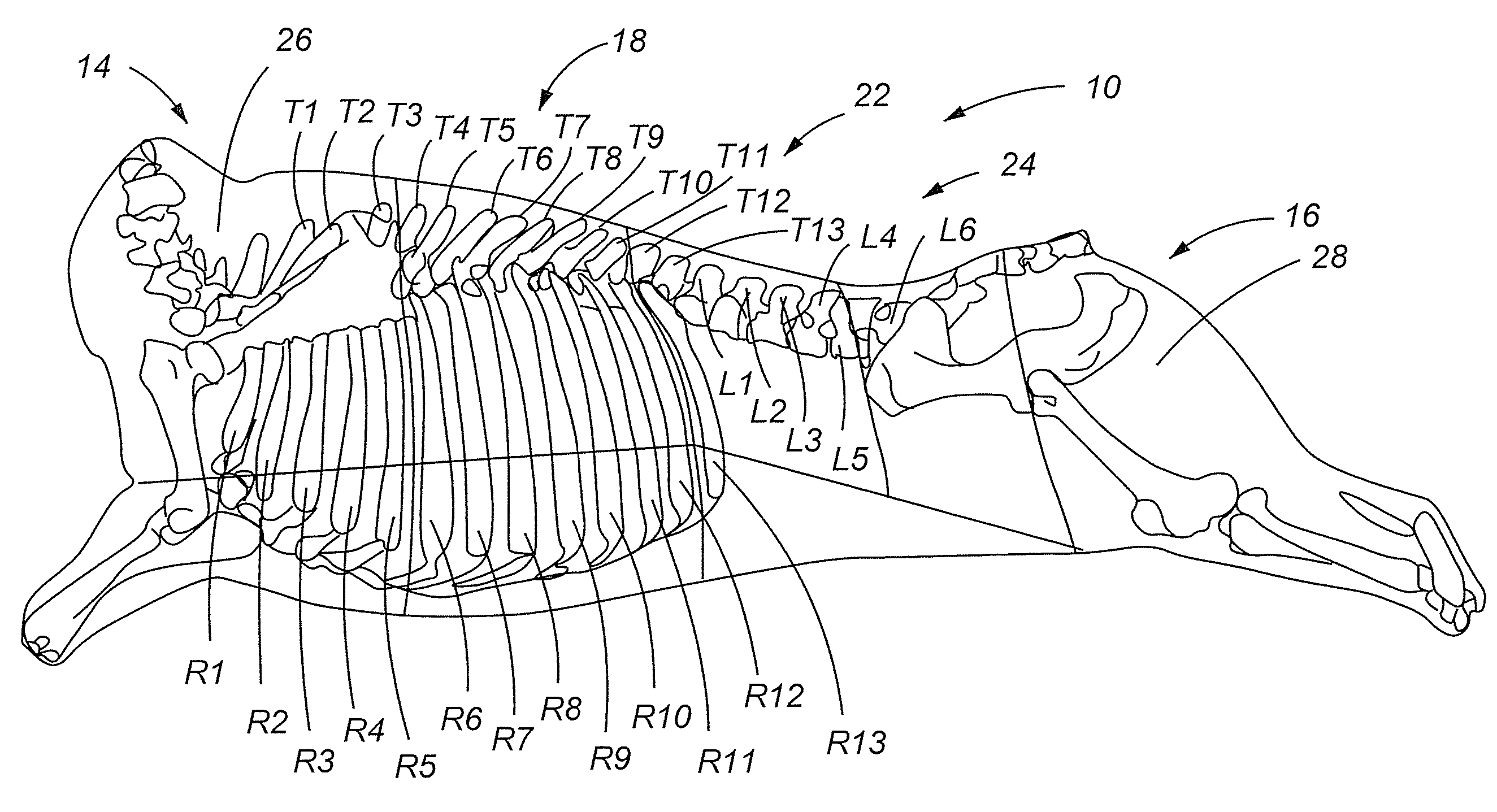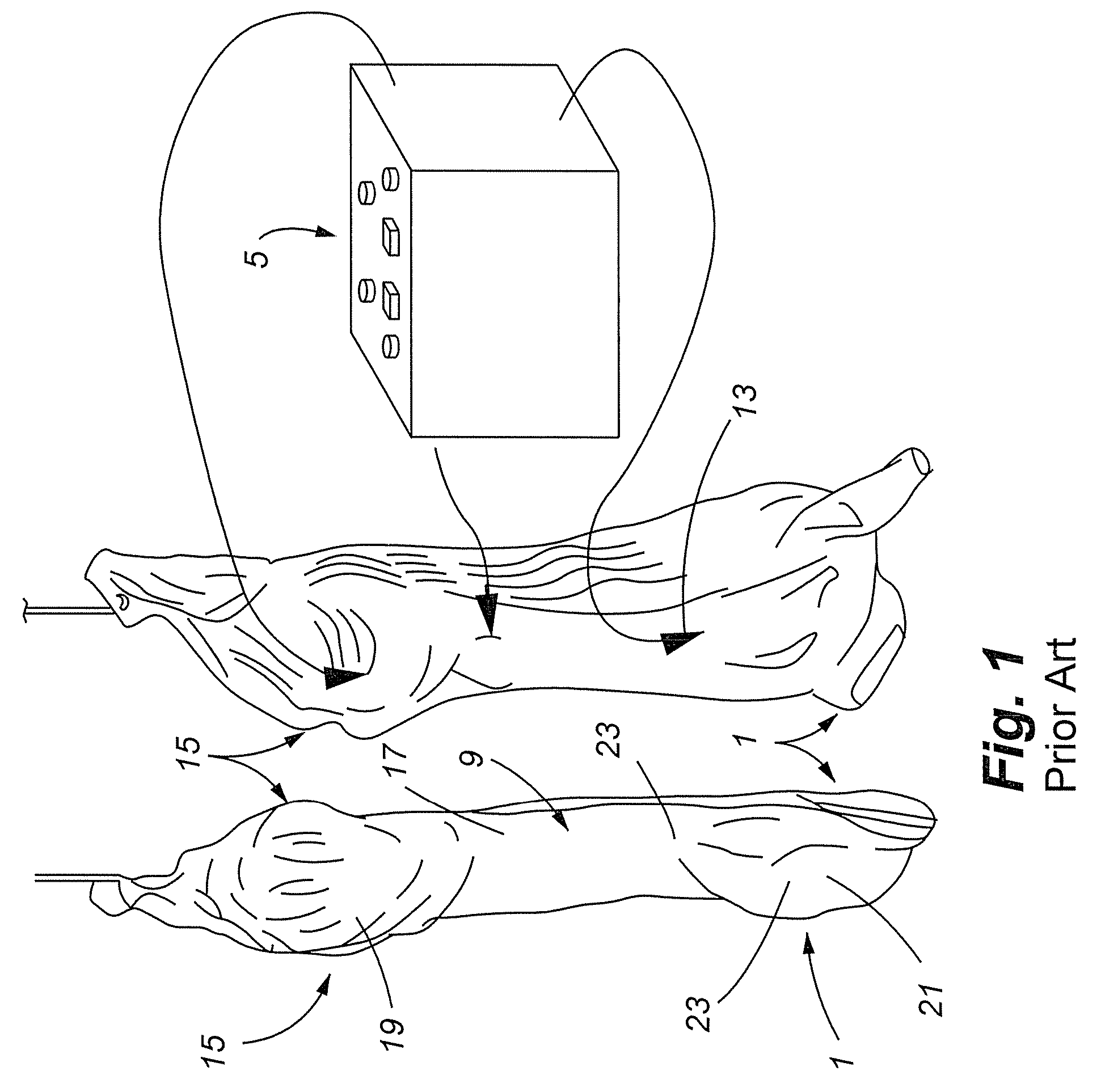Multibar apparatus and method for electrically stimulating a carcass
a multi-bar apparatus and carcass technology, applied in meat tenderising, butchering, poultry processing, etc., can solve the problems of low electrical stimulation efficiency, low internal muscle temperature, and loss of moisture content, and achieve the effect of reducing the amount of electrical stimulation
- Summary
- Abstract
- Description
- Claims
- Application Information
AI Technical Summary
Benefits of technology
Problems solved by technology
Method used
Image
Examples
Embodiment Construction
[0054]The present invention provides for a method and apparatus for tenderizing the meat of an animal carcass without any substantial purge losses in the carcass meat. As used herein, the term “animal carcass” generally refers to the body of an animal after it has been stunned and rendered unconscious or alternatively put to death, such as by exsanguination. Further, as used herein, “animal carcass,” includes a whole carcass, substantially all of a whole carcass, a split carcass, or other subdivisions of a carcass.
[0055]While a bovine carcass, such as the carcass of a bull, heifer, or cow, or steer carcass is typically used for illustrative purposes herein, it is understood that the present invention is applicable to other animal carcasses, including porcine, ovine, buffalo, deer, elk, and poultry carcasses.
[0056]The processing of an animal carcass is generally performed in an assembly line type operation where multiple carcasses are moved and processed along a series of stations. W...
PUM
 Login to View More
Login to View More Abstract
Description
Claims
Application Information
 Login to View More
Login to View More - R&D
- Intellectual Property
- Life Sciences
- Materials
- Tech Scout
- Unparalleled Data Quality
- Higher Quality Content
- 60% Fewer Hallucinations
Browse by: Latest US Patents, China's latest patents, Technical Efficacy Thesaurus, Application Domain, Technology Topic, Popular Technical Reports.
© 2025 PatSnap. All rights reserved.Legal|Privacy policy|Modern Slavery Act Transparency Statement|Sitemap|About US| Contact US: help@patsnap.com



